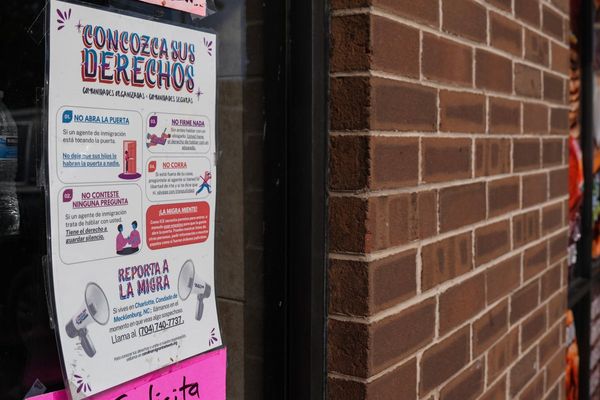
Turning 35 can feel like crossing an invisible line. You’re not old, but your body starts sending subtle messages that things are shifting. These changes aren’t bad—they’re just part of being human. The key is knowing what’s normal and what you can influence. Understanding the physical changes after 35 helps you stay healthy, confident, and ready for the next chapters of life.
1. Slower Metabolism
One of the most common physical changes after 35 is a slower metabolism. You may notice that the same meals and portions that once helped you stay lean now contribute to extra pounds. This slowdown is partly due to a natural decline in muscle mass and hormonal changes. Your body simply burns fewer calories at rest than it used to.
The fix isn’t complicated but does require some attention. Strength training a few times a week and keeping protein intake steady can help preserve muscle and keep your metabolism from dipping too far. Small adjustments, like standing more or walking after meals, also make a difference over time.
2. Muscle Mass Decline
After 35, men begin to lose muscle at a gradual pace—roughly 1% per year if they’re not active. This process, known as sarcopenia, makes daily activities like lifting, climbing stairs, or even carrying groceries a bit harder. Less muscle also means less strength and endurance during workouts.
Resistance training is the best defense. Lifting weights, using resistance bands, or doing bodyweight exercises keeps your muscles engaged and strong. Combine that with enough sleep and balanced nutrition, and you can slow this physical change after 35 to a crawl.
3. Changes in Testosterone Levels
Testosterone levels start to dip gradually after the mid-30s. This hormonal shift can influence energy levels, libido, and even mood. It’s not a sudden drop, but you may notice subtle changes, such as slower post-workout recovery or a reduced drive for intense exercise.
Healthy lifestyle habits go a long way here. Regular physical activity, lower stress, and enough sleep help maintain testosterone balance. If symptoms feel extreme, it’s smart to talk with a doctor and get tested. Sometimes the issue isn’t testosterone itself but other health factors like diet, sleep apnea, or stress.
4. Slower Recovery and More Aches
That weekend basketball game or spontaneous hike might leave you sore longer than expected. Recovery slows with age because tissues repair more slowly, and inflammation takes longer to settle. This change can sneak up on men who stay active but don’t give their bodies enough rest.
Stretching, mobility work, and proper warm-ups matter more than ever. Ice and rest are still beneficial, but so is smart training—mixing high-intensity workouts with low-impact days, such as swimming or cycling. Listening to your body isn’t a weakness; it’s a strategy.
5. Weight Redistribution
Even if the scale barely moves, your body composition can shift. Many men notice fat collecting around the midsection after 35. This occurs due to hormonal changes and reduced muscle mass. Belly fat isn’t just cosmetic—it’s linked to heart disease and insulin resistance.
Keeping an eye on waist size is more useful than obsessing over weight. Regular exercise, especially strength and interval training, helps manage this physical change after 35. So does limiting processed foods and sugar. A few consistent habits can keep your body shape and energy steady.
6. Vision and Hearing Shifts
Reading fine print or hearing in noisy places might suddenly be harder. Vision changes like presbyopia—difficulty focusing on close objects—often start in the late 30s. Hearing can also dull slightly, especially for high-pitched sounds. These changes are gradual but noticeable.
Regular checkups with eye and ear specialists help catch issues early. Protective habits like wearing sunglasses and limiting headphone volume can slow the decline. It’s less about stopping aging and more about adapting smartly to it.
7. Skin and Hair Changes
Skin starts to lose elasticity and moisture after 35. Fine lines, dryness, and uneven tone can appear even if you’ve avoided sun damage. Hair may thin or change texture, too, and some men notice more gray strands appearing.
Simple care goes a long way: hydration, sunscreen, and mild cleansers help maintain healthy skin. For hair, gentle products and scalp health matter.
8. Changes in Sleep Patterns
Falling asleep and staying asleep can get trickier after 35. Stress, hormones, and lifestyle habits all play a role. Even when you get enough hours of sleep, quality may decline, leaving you groggy or irritable.
Building a consistent bedtime routine helps. Avoid screens late at night and keep caffeine limited to morning hours. Exercise earlier in the day can also improve deep sleep.
Staying Ahead of These Changes
Every man experiences physical changes after the age of 35, but how you respond makes all the difference. Awareness leads to better choices—about exercise, diet, and rest. None of these shifts means decline; they simply call for smarter habits and more attention to what your body needs today.
What physical changes after 35 have you noticed, and how have you adapted?
What to Read Next…
- 6 Signs Your Body Is Aging Faster Than It Should Be
- Mens Health: 8 Health Issues Wives Need to Be on Alert For Because Men Won’t Pay Attention
- 7 Fitness Trends Men Are Regretting in Their 40s
- 6 Things Men Over 40 Should Stop Doing in Relationships
- 7 Habits of Couples Who Truly Love Each Other
The post 8 Physical Changes Every Man Should Expect After 35 appeared first on Clever Dude Personal Finance & Money.







